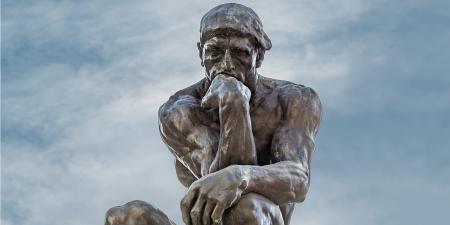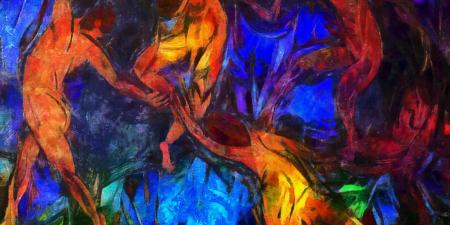Case
Katherine is a third-year medical student on her internal medicine rotation at an academic medical center that serves as a busy tertiary-care hospital for its region. The residents she works with are swamped with work; when they are not actively admitting and caring for patients, they are inundated with paperwork, submitting online orders, and completing health record notes. Katherine knows that the residents are kind and generous people who have been selected twice—for medical school and then for residency—on the basis of test scores, academic performance, and character recommendations. She cannot help but note, however, their frustration with patients who demand so much of their time, their irritation with nurses who page them about questions the residents think have obvious answers, and their eagerness to “turf” patients to another service or practice center to lighten their case loads. She can understand the origins of these behaviors while feeling that the residents are in danger of burning out and becoming more cynical than would be healthy for a long-term career.
One evening, Katherine’s entire team is asked to stop working at 4 p.m. and take a trip to the Museum of Fine Arts. The residency program director is an advocate for innovative approaches to encouraging self-reflection among the residents and helping them see patients as people rather than diagnoses. He has asked the internal medicine teams to take turns going to the museum to look at and frame discussion around artwork as a way of generating conversation about medicine, patients, and life as a trainee. Katherine hears the residents complain that this outing is intended to force-feed them empathy and humanism; they consider it a waste of time that could be better spent on patient care and leaving the hospital at a decent time.
Commentary
Medicine is both an art and a science. As the great William Osler noted, “The practice of medicine is an art, not a trade; a calling not a business; a calling in which your heart will be exercised equally with your head” [1]. Residency programs struggle to balance art and science with seemingly endless, often overwhelming hard work. It is no wonder then that, for stressed, burned-out residents, such as the ones Katherine observes, art and perhaps even science take a backseat to just getting the work done. In the hypothetical (but in our experience, very plausible) dilemma posed, we see three interrelated issues. First is the residents’ perception that a “field trip” to a museum is a waste of time, distracting them from their real work. The second is that the residents resent being “force-fed” empathy and compassion. The third issue is how to acknowledge and address the residents’ negativity and burnout.
Is the Museum Outing a Waste of Time?
We would argue that, properly structured and facilitated, as this program director obviously intends it to be, the proposed visit to a museum offers not a distraction from work, but another (essential) perspective on work. What better way to teach residents to “see” attentively, imaginatively, and nonjudgmentally than by exploring art itself? The painter Paul Klee wrote, “Art does not reproduce the visible, rather it makes visible” [2], suggesting that art does not mimic what we see but makes us see what is there in other ways. Spending a few hours learning to see paintings will in fact contribute to these residents’ learning to “see” their patients more deeply—not only their signs and symptoms, but also their lived lives, their social circumstances, their hopes and fears regarding their illnesses.
Research supports the clinical value of this arts-related activity. In the mid-1990s medical educators at Yale decided to sharpen their learners’ observational skills by taking them out of the classroom and into the art museum, where they asked them to consider a few simple questions: What do you see? What’s going on? Why do you think that? The result was a significant improvement in the students’ visual thinking [3]. These findings have since been replicated in many studies [4-6], and other research has documented that exposure to art also improves students’ empathy and perspective-taking skills, as well as building narrative competence and meaning making [7, 8]. This growing body of scholarship provides evidence that, far from being “a waste of time,” studying art can enhance the art of medicine. Since it is the responsibility of the program director to ensure that learning the art as well as the science of medicine receives attention, one could argue that this activity would simply be advancing an essential educational goal.
Are the Residents Being “Force-Fed” Humanistic Attitudes?
There is concern among learners that curricular attempts to promote professionalism and humanistic values are condescending and disrespectful [9]. These objections also surface when humanities and arts are incorporated into the curriculum. Of course, it is absurd to claim that merely by going to an art museum learners will somehow become more compassionate physicians. Exposure to art cannot produce, widget-like, more humanistic, caring doctors [10], and residents and other learners are right to resist such simplistic causal assertions. However, with skilled facilitation, the art museum experience can move residents beyond the comfort zone of what they think they know and what they think is important, not only about paintings but about patients [11]. By encouraging perspective taking and critical thinking [12], the session can help residents become aware of how quickly, simply by looking at someone, most of us form judgments, make assumptions, and develop stories about him or her. By listening to the ideas of their fellow residents, they discover how, from identical visual information, others draw very different conclusions and expectations. Finally, by becoming informed about the historical, sociocultural, and psychological background of the artist, they may form opinions about his or her intent in creating the work.
Learning a different way of “seeing” in the museum context will not produce humanism in learners. What the museum session can do is encourage learners to hold an “open view” of what something means or what is important about it for a longer period of time; it can open a dialogue among learners about what happens when they look at their patients; and it canhelp them become aware of what is assumed and conveyed in their clinical gaze [13]. Similarly, as residents share with one another the stories they have so quickly constructed about the paintings, as well as the “evidence” they used to formulate these stories, they can begin to realize that there are multiple ways of understanding patients and that keeping an open mind and suspending judgment are steps to truly receiving the patient’s story. The value of cultivating this more reflective way of seeing lies in its stimulation of questioning, imagining, and challenging processes, all of which are relevant to clinical practice.
How Do We Attend to the Residents’ Skepticism and Burnout?
No educational intervention should be undertaken without sensitivity to learners’ concerns about it. Pedagogical theory emphasizes the importance of engaging learners’ objections rather than attempting to impose learning in a top-down manner. Despite our advocating for the value of a night at the museum, we do not wish to ignore the residents’ resistance and resentment. Therefore, we advocate a respectful and curious exchange with skeptical learners about their doubts.
At least two factors may be contributing to the residents’ negativity. First, their contempt for the exercise may be rooted in the medical education culture, which legitimizes certain forms of learning as relevant and valuable and deems others tangential or useless [14, 15]. This perspective could be critically examined with the residents, clarifying that the event does not simply represent a break from clinical duties but in fact has significant clinical relevance, as noted in the above-cited research. The residents’ negative reaction may also be secondary to their burnout, as Katherine, the astute student in the scenario, suspects. This issue might be effectively addressed by pointing out that one goal of the museum visit is to help stimulate empathic interest in and curiosity about their patients; then discussing evidence suggesting that physicians who are connected emotionally to patients find their work more meaningful, which in turn acts as an antidote to burnout [16, 17].
Final Thoughts
Medical residency should be more than merely problem-based learning. It should be more than asking for the chief complaint, doing the physical exam, running a multitude of lab tests and imaging studies, and finally generating a diagnosis and treatment plan. If that represented the sum total of clinical practice, it could be performed by robots. As any clinician knows, however, it also takes a nonjudgmental, scrupulous gaze, an inquisitive mind, and an empathetic heart to heal the patient. An activity that helps to develop residents’ observational, perspective taking, and imaginative skills clearly should have a place in their education. A night at the museum is an important way to emphasize attentive seeing, nonjudgmental curiosity, and appreciation for multiple perspectives. In so doing, it offers the potential to encourage truly patient-centered care and help revitalize residents’ appreciation for the work of doctoring in the process.
References
-
Osler W. The master-word in medicine. In: Hinohara S, Niki H, eds. Osler’s “A Way of Life” and other Addresses, with Commentary and Annotations. Durham, NC: Duke University Press; 2001:272-273.
-
Klee P. Creative credo. Schöpferische Konfession. Edschmid K, ed. Berlin, Germany: E. Reiss; 1920. Tribune der Kunst und Zeit, vol. 13.
- Dolev JC, Friedlander LK, Braverman IM. Use of fine art to enhance visual diagnostic skills. JAMA. 2001;286(9):100-101.
- Jasani SK, Saks NS. Utilizing visual art to enhance the clinical observation skills of medical students. Med Teach. 2013;35(7):e1327-e1331.
- Klugman CM, Peel J, Beckmann-Mendez D. Art rounds: teaching interprofessional students visual thinking strategies at one school. Acad Med. 2011;86(10):1266-1271.
- Naghshineh S, Hafler JP, Miller AR, et al. Formal art observation training improves medical students’ visual diagnostic skills. J Gen Intern Med. 2008;23(7):991-997.
- Shapiro J, Rucker L, Beck J. Training the clinical eye and mind: using the arts to develop medical students’ observational and pattern recognition skills. Med Ed. 2006;40(3):263-268.
- Schaff PB, Isken S, Tager RM. From contemporary art to core clinical skills: observation, interpretation, and meaning-making in a complex environment. Acad Med. 2011;86(10):1272-1276.
- Brainard AH, Brislen HC. Viewpoint: learning professionalism: a view from the trenches. Acad Med. 2007;82(11):1010-1014.
- Bishop JP. Rejecting medical humanism: medical humanities and the metaphysics of medicine. J Med Humanit. 2008;29(1):15-25.
- Wear D, Aultman JM. Creating difficulties everywhere. Perspect Biol Med. 2007;50(3):348-362.
- Belling C. Commentary: Sharper instruments: on defending the humanities in undergraduate medical education. Acad Med. 2010;85(6):938-940.
- Shapiro J. (Re)examining the clinical gaze through the prism of literature. Families Systems Health. 2002;20(2):161-170.
-
Wear D, Zarconi J. A humanities-based capstone course in medical education: An affirming and difficult look back. J Learn Through Arts.2006;2(1):Article 8. https://escholarship.org/uc/item/0332r7hzAccessed June 27, 2014.
- Shapiro J, Coulehan J, Wear D, Montello M. Medical humanities and their discontents: definitions, critiques, and implications. Acad Med. 2009;84(2):192-198.
- Krasner M, Epstein RM, Beckman H, et al. Association of an educational program in mindful communication with burnout, empathy, and attitudes among primary care physicians. JAMA. 2009;302(12):1284-1293.
- Shanafelt T. Enhancing meaning in work: a prescription for preventing physician burnout and promoting patient-centered care. JAMA. 2009;302(12):1338-1340.



